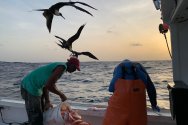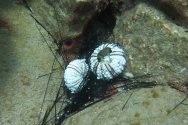
Dossier
Bonaire, St. Eustatius en Saba
Van koraalriffen tot mangroves en van zeeschildpadden tot de effecten van zonnebrandcrème: Wageningen University & Research onderzoekt de natuur van Bonaire, St. Eustatius en Saba, zowel boven als onder water.
Wageningen University & Research doet onderzoek en adviseert op het vlak van beheer van het Caribische deel van Nederland: integraal kustbeheer, beheer van koraalriffen, mangroves, herstel van zeegras, ecotoxicologie en monitoringsprogramma’s voor visserij. Ook voeren we studies uit naar biodiversiteit van mariene en terrestrische soorten, variërend van zeezoogdieren, reptielen en zeevogels tot mariene benthos en vis.



